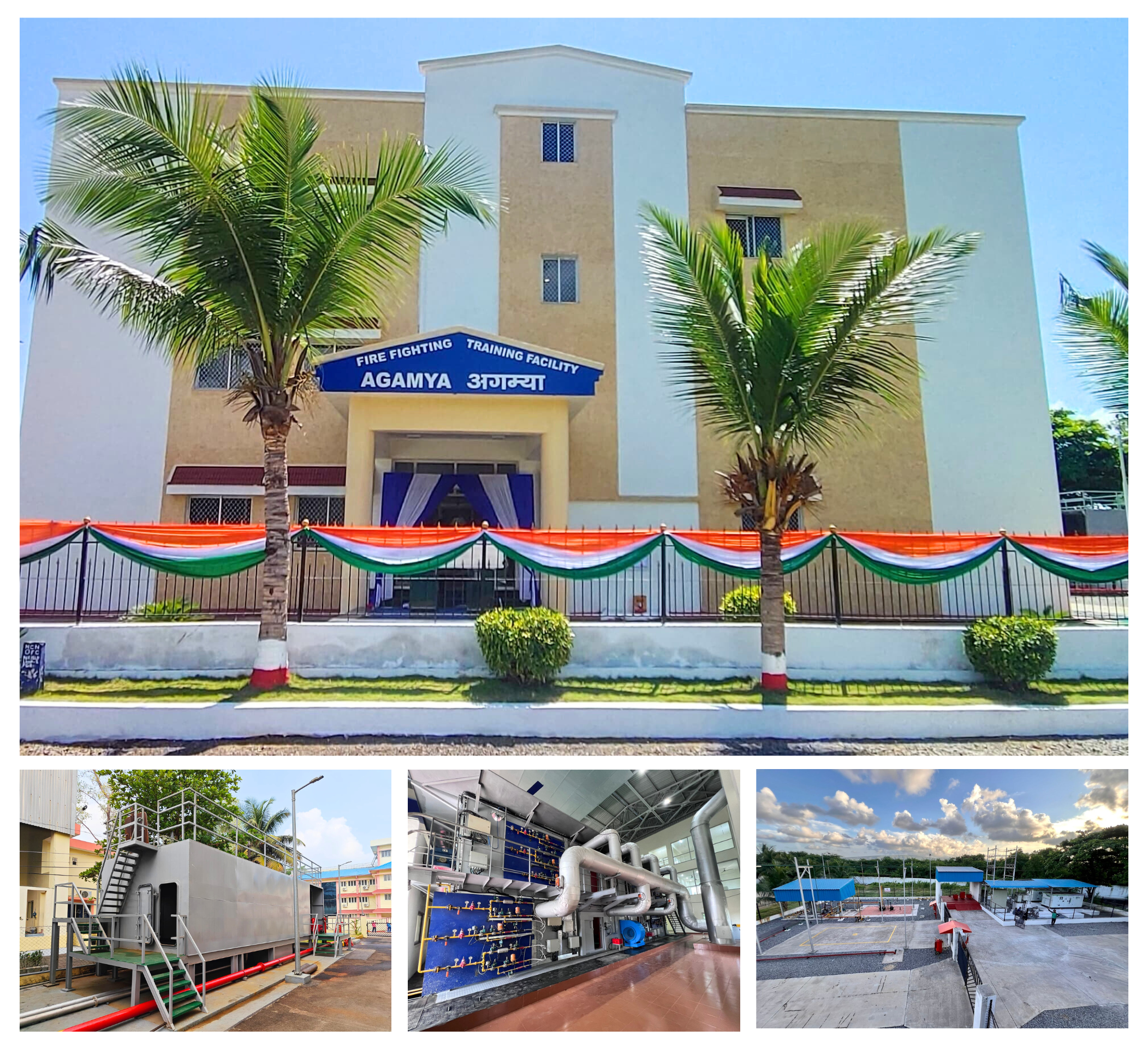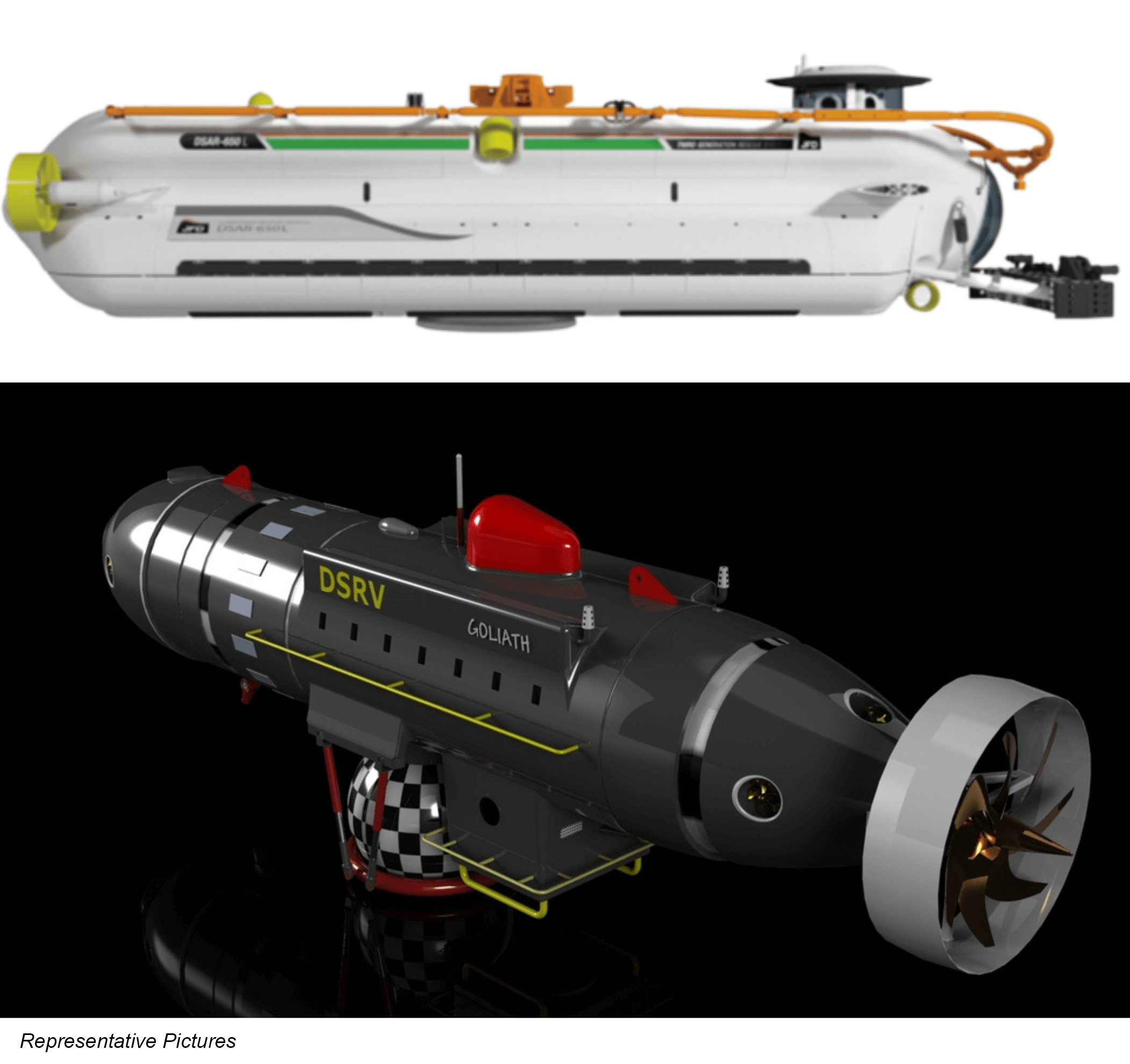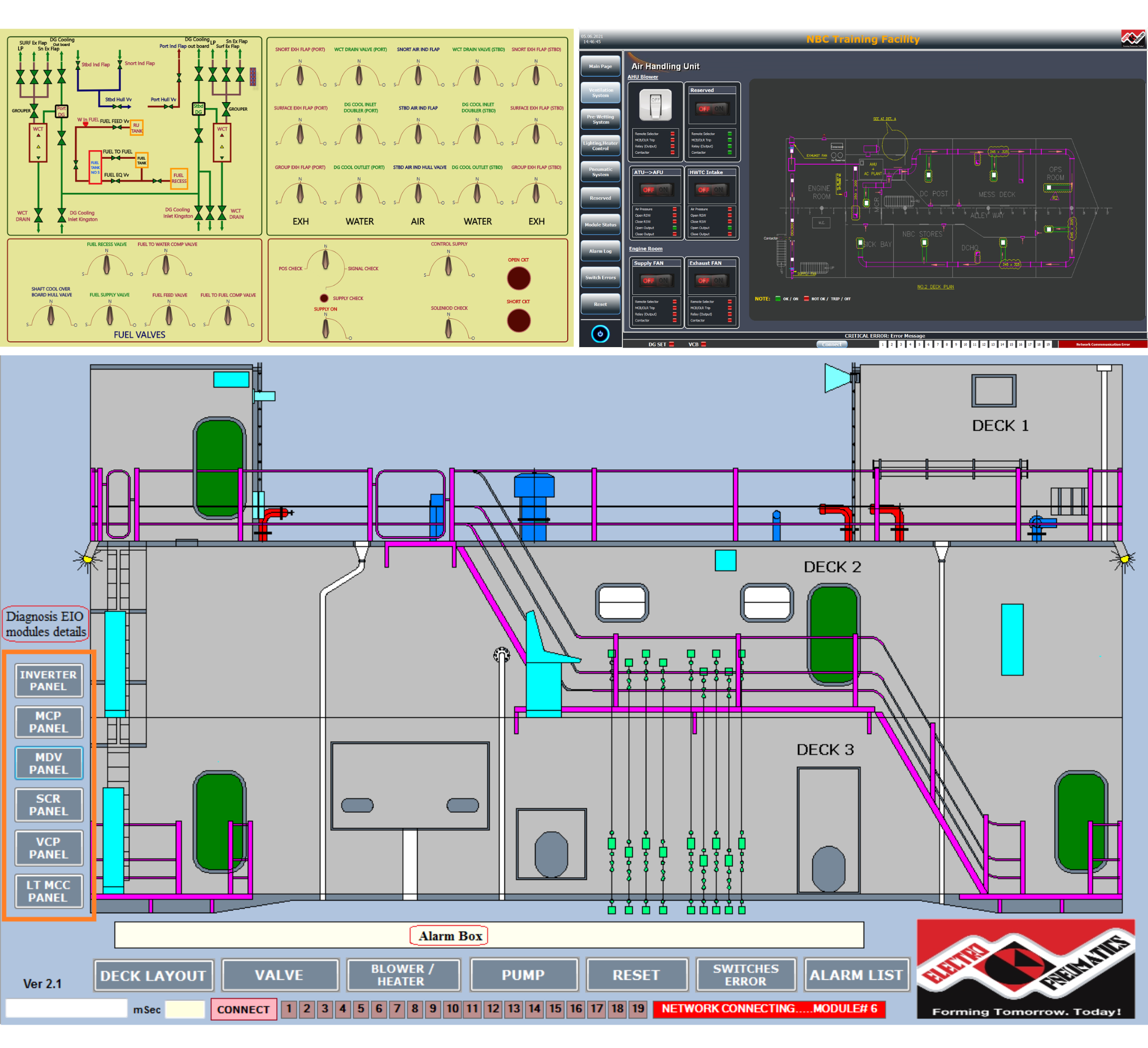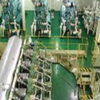
- Ship Damage Control Simulator (DCS)
The DCS imparts training to the ship’s crew for battleship damage control scenarios in a real war-like situation.
It simulates war-time damages including flooding with explosion sounds, smoke and damage to systems occurring in a controllable rolling environment.
The unit is designed to cater for exercising 25-30 trainees at a time.
Features
- A three-deck ship-like structure, supported on end bearings, housed on portal frames
- Hydraulic actuators mounted on the portal frames on either end of the longitudinal axis help achieve a controlled rolling motion
- Includes an engine room, control room, DC store, mess decks with auxiliary machinery compartments and alleyways mimicking a ship interior
- Linux-based control system with touchscreen GUI to control simulator operations
- BMS (Building Management System) to operate all auxiliary equipment including ventilation, flooding system and lighting
- Smoke and noise generators to simulate a real war-like environment
- Underground sump and other water management facilities to judiciously utilise water
- Civil building houses an instructor room, class room and briefing room

- Ship Damage Control Simulator (DCS)
The DCS imparts training to the ship’s crew for battleship damage control scenarios in a real war-like situation.
It simulates war-time damages including flooding with explosion sounds, smoke and damage to systems occurring in a controllable rolling environment.
The unit is designed to cater for exercising 25-30 trainees at a time.
Features
- A three-deck ship-like structure, supported on end bearings, housed on portal frames
- Hydraulic actuators mounted on the portal frames on either end of the longitudinal axis help achieve a controlled rolling motion
- Includes an engine room, control room, DC store, mess decks with auxiliary machinery compartments and alleyways mimicking a ship interior
- Linux-based control system with touchscreen GUI to control simulator operations
- BMS (Building Management System) to operate all auxiliary equipment including ventilation, flooding system and lighting
- Smoke and noise generators to simulate a real war-like environment
- Underground sump and other water management facilities to judiciously utilise water
- Civil building houses an instructor room, class room and briefing room

- Ship Damage Control Simulator (DCS)
The DCS imparts training to the ship’s crew for battleship damage control scenarios in a real war-like situation.
It simulates war-time damages including flooding with explosion sounds, smoke and damage to systems occurring in a controllable rolling environment.
The unit is designed to cater for exercising 25-30 trainees at a time.
Features
- A three-deck ship-like structure, supported on end bearings, housed on portal frames
- Hydraulic actuators mounted on the portal frames on either end of the longitudinal axis help achieve a controlled rolling motion
- Includes an engine room, control room, DC store, mess decks with auxiliary machinery compartments and alleyways mimicking a ship interior
- Linux-based control system with touchscreen GUI to control simulator operations
- BMS (Building Management System) to operate all auxiliary equipment including ventilation, flooding system and lighting
- Smoke and noise generators to simulate a real war-like environment
- Underground sump and other water management facilities to judiciously utilise water
- Civil building houses an instructor room, class room and briefing room

- Ship Damage Control Simulator (DCS)
The DCS imparts training to the ship’s crew for battleship damage control scenarios in a real war-like situation.
It simulates war-time damages including flooding with explosion sounds, smoke and damage to systems occurring in a controllable rolling environment.
The unit is designed to cater for exercising 25-30 trainees at a time.
Features
- A three-deck ship-like structure, supported on end bearings, housed on portal frames
- Hydraulic actuators mounted on the portal frames on either end of the longitudinal axis help achieve a controlled rolling motion
- Includes an engine room, control room, DC store, mess decks with auxiliary machinery compartments and alleyways mimicking a ship interior
- Linux-based control system with touchscreen GUI to control simulator operations
- BMS (Building Management System) to operate all auxiliary equipment including ventilation, flooding system and lighting
- Smoke and noise generators to simulate a real war-like environment
- Underground sump and other water management facilities to judiciously utilise water
- Civil building houses an instructor room, class room and briefing room

- Ship Firefighting Training Facility (FFTF)
The FFTF imparts realistic firefighting training to personnel serving onboard ships.
In the FFTF, the trainees experience fire, high temperature, low visibility, smoke, sound, etc., which prepares them for prompt and effective response.
During the training, trainees fight fires in the most fire-prone compartments of the ship using fixed / portable firefighting equipment.
Features
- A covered facility with a three-deck ship-like structure, placed on columns, in an open water sump
- Burn compartments- engine room, MCR, galley and mess decks
- Different types of fire based on location- fuel fire, bilge fire, oil fryer fire, electrical fire and carbonaceous fire
- Burner technology and flame management as per latest NFPA guidelines
- Fuel options- propane / LPG
- Gas detection system for unburnt fuel and carbon monoxide
- Temperature monitoring system for safety redundancy
- PLC control system to use and operate various equipment
- Automatic and manual single button emergency system activation
- Double hose area to learn the nuances of handling pressurised water hoses
- Open Fire Hard with multiple fire pits for basic firefighting training
- Mockup of a helicopter for Helo deck fire

- Ship Firefighting Training Facility (FFTF)
The FFTF imparts realistic firefighting training to personnel serving onboard ships.
In the FFTF, the trainees experience fire, high temperature, low visibility, smoke, sound, etc., which prepares them for prompt and effective response.
During the training, trainees fight fires in the most fire-prone compartments of the ship using fixed / portable firefighting equipment.
Features
- A covered facility with a three-deck ship-like structure, placed on columns, in an open water sump
- Burn compartments- engine room, MCR, galley and mess decks
- Different types of fire based on location- fuel fire, bilge fire, oil fryer fire, electrical fire and carbonaceous fire
- Burner technology and flame management as per latest NFPA guidelines
- Fuel options- propane / LPG
- Gas detection system for unburnt fuel and carbon monoxide
- Temperature monitoring system for safety redundancy
- PLC control system to use and operate various equipment
- Automatic and manual single button emergency system activation
- Double hose area to learn the nuances of handling pressurised water hoses
- Open Fire Hard with multiple fire pits for basic firefighting training
- Mockup of a helicopter for Helo deck fire

- Ship Firefighting Training Facility (FFTF)
The FFTF imparts realistic firefighting training to personnel serving onboard ships.
In the FFTF, the trainees experience fire, high temperature, low visibility, smoke, sound, etc., which prepares them for prompt and effective response.
During the training, trainees fight fires in the most fire-prone compartments of the ship using fixed / portable firefighting equipment.
Features
- A covered facility with a three-deck ship-like structure, placed on columns, in an open water sump
- Burn compartments- engine room, MCR, galley and mess decks
- Different types of fire based on location- fuel fire, bilge fire, oil fryer fire, electrical fire and carbonaceous fire
- Burner technology and flame management as per latest NFPA guidelines
- Fuel options- propane / LPG
- Gas detection system for unburnt fuel and carbon monoxide
- Temperature monitoring system for safety redundancy
- PLC control system to use and operate various equipment
- Automatic and manual single button emergency system activation
- Double hose area to learn the nuances of handling pressurised water hoses
- Open Fire Hard with multiple fire pits for basic firefighting training
- Mockup of a helicopter for Helo deck fire

- Submarine Handling and Motion Control Simulator (SHMCS)
The SHMCS is a fully functional replica of the equipment, consoles and instrumentation of the 1st deck of control room of a submarine.
It includes an onboard panel and devices like steering console, watchkeeping panels, communication devices with dynamic and static mockups.
The simulator is mounted on a motion platform with two degrees of freedom (2 DOF), i.e. roll and pitch motion, to simulate the submarine’s motion.
Features
- Imparts submarine crew training in operation of various systems and equipment in control room
- Trainees can simulate various scenarios in a realistic manner
- The adverse effects of wrong orders, weight calculation, flooding, etc. can be simulated
- Reduces probability of accidents during training at sea or harbour
- Saves critical running hours of submarine machinery and lessens wear and tear
- Reduces cost of training and maintenance
- Enhances time-on-task for the operational submarine

- Submarine Handling and Motion Control Simulator (SHMCS)
The SHMCS is a fully functional replica of the equipment, consoles and instrumentation of the 1st deck of control room of a submarine.
It includes an onboard panel and devices like steering console, watchkeeping panels, communication devices with dynamic and static mockups.
The simulator is mounted on a motion platform with two degrees of freedom (2 DOF), i.e. roll and pitch motion, to simulate the submarine’s motion.
Features
- Imparts submarine crew training in operation of various systems and equipment in control room
- Trainees can simulate various scenarios in a realistic manner
- The adverse effects of wrong orders, weight calculation, flooding, etc. can be simulated
- Reduces probability of accidents during training at sea or harbour
- Saves critical running hours of submarine machinery and lessens wear and tear
- Reduces cost of training and maintenance
- Enhances time-on-task for the operational submarine

- Submarine Damage Control and Firefighting Simulator (SM DC FFTF)
The SM DC FFTF imparts realistic and integrated training to the submarine crew for managing and controlling damage and for firefighting emergencies.
The simulator is an independent training facility with two separate submarine like hulls for damage control and firefighting.
Both simulators are integrated such that DC and FF exercises can be undertaken independently or in tandem.
Features
- Advanced burner and flame management technology for safe operation
- Audio simulation of sounds of machinery and equipment of the submarine, damage leaks, etc.
- Fire alarm, gas detection and temperature monitoring systems for crew safety
- Water management system for the supply, purification, collection and drainage of water from and to the simulators
- Fuel storage and distribution facility in accordance with CCOE / PESO norms

- Submarine Damage Control and Firefighting Simulator (SM DC FFTF)
The SM DC FFTF imparts realistic and integrated training to the submarine crew for managing and controlling damage and for firefighting emergencies.
The simulator is an independent training facility with two separate submarine like hulls for damage control and firefighting.
Both simulators are integrated such that DC and FF exercises can be undertaken independently or in tandem.
Features
- Advanced burner and flame management technology for safe operation
- Audio simulation of sounds of machinery and equipment of the submarine, damage leaks, etc.
- Fire alarm, gas detection and temperature monitoring systems for crew safety
- Water management system for the supply, purification, collection and drainage of water from and to the simulators
- Fuel storage and distribution facility in accordance with CCOE / PESO norms

- Nuclear, Biological, Chemical Training Facility (NBCTF)
NBCTF is used for real-time defence training from nuclear, biological, chemical, radiological and other nuclear agents onboard ships by simulating the various scenarios.
This is a first of its kind design and we are presently successfully maintaining the said facility at >95% operational uptime.
Features
- A three-deck, ship-like structure in an open water sump
- Consists of various compartments that are required to create a realistic NBC environment
- Apart from NBC detection and monitoring systems, the simulator has two sets of cleansing stations, classrooms, DCHQ, CBRN store, ATU and bridge
- Pre-wetting system for water curtain
- Ship installed radiation / chemical / biological detection systems
- Total Atmospheric Control System (TACS) for closed down ventilation
- Calibration facility for portable equipment
- Water filtration system
- CCTV, storage of CBRN equipment onboard
- Remote operation of source pockets for ‘hot spots’
- Linux-based control system to integrate all ship’s systems, NBC equipment

- Nuclear, Biological, Chemical Training Facility (NBCTF)
NBCTF is used for real-time defence training from nuclear, biological, chemical, radiological and other nuclear agents onboard ships by simulating the various scenarios.
This is a first of its kind design and we are presently successfully maintaining the said facility at >95% operational uptime.
Features
- A three-deck, ship-like structure in an open water sump
- Consists of various compartments that are required to create a realistic NBC environment
- Apart from NBC detection and monitoring systems, the simulator has two sets of cleansing stations, classrooms, DCHQ, CBRN store, ATU and bridge
- Pre-wetting system for water curtain
- Ship installed radiation / chemical / biological detection systems
- Total Atmospheric Control System (TACS) for closed down ventilation
- Calibration facility for portable equipment
- Water filtration system
- CCTV, storage of CBRN equipment onboard
- Remote operation of source pockets for ‘hot spots’
- Linux-based control system to integrate all ship’s systems, NBC equipment

- Nuclear, Biological, Chemical Training Facility (NBCTF)
NBCTF is used for real-time defence training from nuclear, biological, chemical, radiological and other nuclear agents onboard ships by simulating the various scenarios.
This is a first of its kind design and we are presently successfully maintaining the said facility at >95% operational uptime.
Features
- A three-deck, ship-like structure in an open water sump
- Consists of various compartments that are required to create a realistic NBC environment
- Apart from NBC detection and monitoring systems, the simulator has two sets of cleansing stations, classrooms, DCHQ, CBRN store, ATU and bridge
- Pre-wetting system for water curtain
- Ship installed radiation / chemical / biological detection systems
- Total Atmospheric Control System (TACS) for closed down ventilation
- Calibration facility for portable equipment
- Water filtration system
- CCTV, storage of CBRN equipment onboard
- Remote operation of source pockets for ‘hot spots’
- Linux-based control system to integrate all ship’s systems, NBC equipment

- Nuclear, Biological, Chemical Training Facility (NBCTF)
NBCTF is used for real-time defence training from nuclear, biological, chemical, radiological and other nuclear agents onboard ships by simulating the various scenarios.
This is a first of its kind design and we are presently successfully maintaining the said facility at >95% operational uptime.
Features
- A three-deck, ship-like structure in an open water sump
- Consists of various compartments that are required to create a realistic NBC environment
- Apart from NBC detection and monitoring systems, the simulator has two sets of cleansing stations, classrooms, DCHQ, CBRN store, ATU and bridge
- Pre-wetting system for water curtain
- Ship installed radiation / chemical / biological detection systems
- Total Atmospheric Control System (TACS) for closed down ventilation
- Calibration facility for portable equipment
- Water filtration system
- CCTV, storage of CBRN equipment onboard
- Remote operation of source pockets for ‘hot spots’
- Linux-based control system to integrate all ship’s systems, NBC equipment

- Deep Submergence Rescue Vehicle Simulator (DSRVS)
DSRV training simulator is a fully functional replica of the Submarine Rescue Vessel (SRV) having a motion platform with two degrees of freedom (2 DOF), i.e. rolling and pitching motion.
Front facia replica of the Remotely Operated Vehicle (ROV) that is stationary.
Features
- Familiarisation with the functioning of the ROV and SRV since it is not possible to frequently deploy the DSRV unit to sea for ab-initio / refresher training of pilots and operators due to long layoffs, refit and repair of DSRV
- Train crew to conduct basic submarine rescue drills
- Possible to simulate most emergency scenarios, procedures and skills needed for an actual DSRV deployment that are beyond SOPs with hands-on experience
- Valuable operational hours of the DSRV would be utilised for training causing fair wear and tear of the equipment
- Limited space in the DSRV to carry trainees for training

- Ship Engine Room Simulator (SERS)
SERS imparts ship’s crew learning and training experience in a ‘real’ engine room scenario that includes a working main diesel engine, attached to a propeller through shafting.
The facility is also used for hands-on training on other auxiliary machinery like DGs, ref plant, AC and other equipment for operation, maintenance and watchkeeping.
It is a 3/5-deck ship-like structure, installed on columns in an open water sump.
Features
- Customised design, fabrication, installation and equipment fit
- Engine room of any class of ship can be replicated
- All equipment supplied by the Navy can be installed
- Marine-grade equipment and system configuration
- The simulator can be accredited for issuing auxiliary and main engine watchkeeping certificates akin to a ship

- Soft Panel Simulators
Soft Panel simulators are developed by Electropneumatics to put ship’s crew trainees in a computer-generated immersive environment where they learn to operate equipment, systems, tools and tackles with / without other members of the crew through coordination and communication.
This simulated environment is highly realistic with high fidelity and provides the perfect training platform for learning a wide range of specialist skills and meeting key training objectives such as starting / stopping / operating propulsion plants like gas turbines, diesel engines, etc.
Features
- Employs proven training concepts and simulates tactical scenarios
- Teaches operation of complex propulsion and weapon systems
- Trains on how to take decisive countermeasures in the face of threats of challenging weather conditions
- Replicates real-life environmental conditions and virtual personnel

- Soft Panel Simulators
Soft Panel simulators are developed by Electropneumatics to put ship’s crew trainees in a computer-generated immersive environment where they learn to operate equipment, systems, tools and tackles with / without other members of the crew through coordination and communication.
This simulated environment is highly realistic with high fidelity and provides the perfect training platform for learning a wide range of specialist skills and meeting key training objectives such as starting / stopping / operating propulsion plants like gas turbines, diesel engines, etc.
Features
- Employs proven training concepts and simulates tactical scenarios
- Teaches operation of complex propulsion and weapon systems
- Trains on how to take decisive countermeasures in the face of threats of challenging weather conditions
- Replicates real-life environmental conditions and virtual personnel








